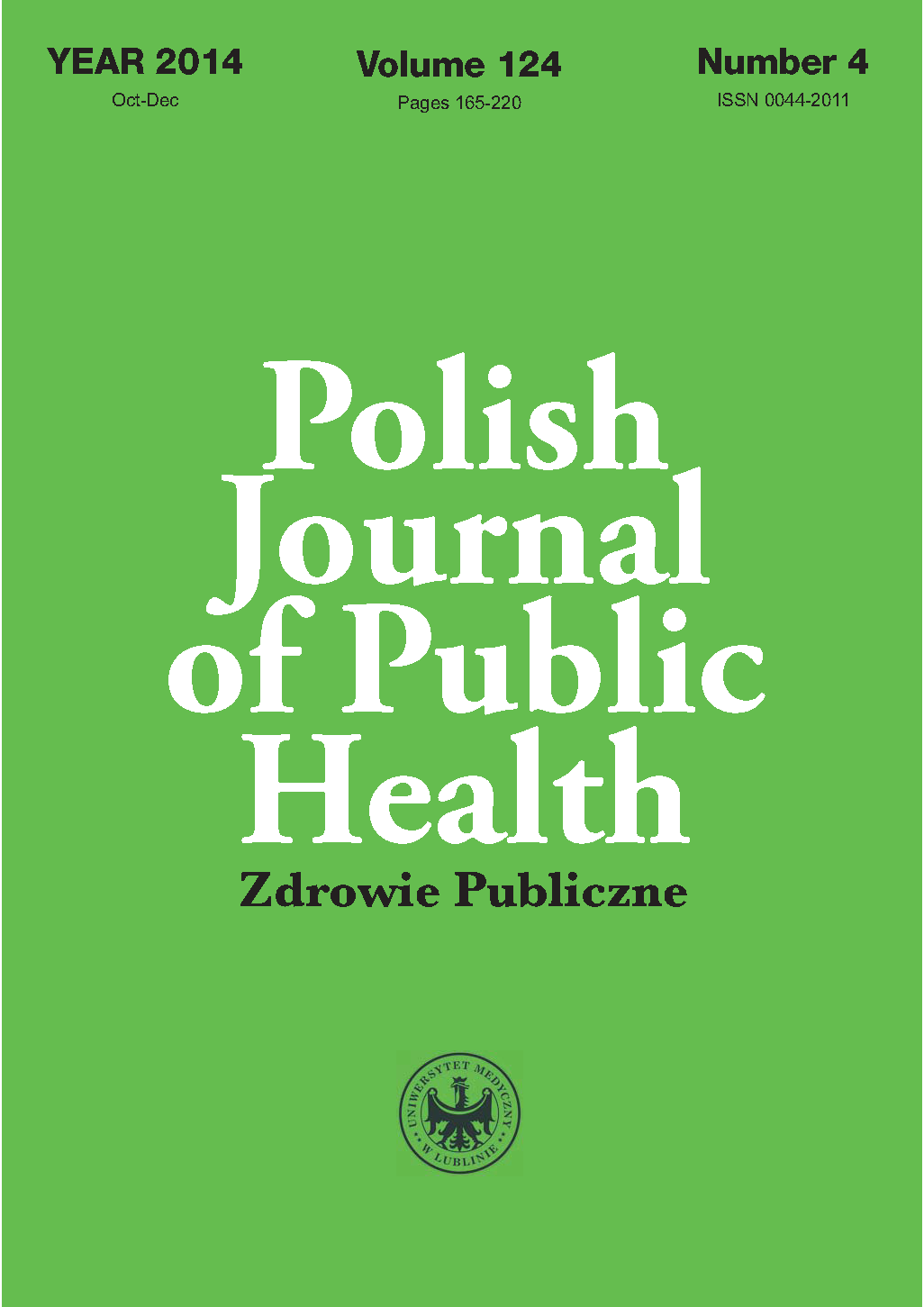The attitude of students of Academy of Physical Education to alcohol consumption
DOI:
https://doi.org/10.1515/pjph-2015-0010Keywords:
students, alcohol, AUDIT testAbstract
Introduction. Alcohol is found to contribute to everyday life of young people. Frequent heavy drinking, violent behavior under influence of alcohol are typical for youths. Unreasonable over-consumption of alcohol might have direct impact on their health in adulthood, as initially controlled amount of alcohol drinking can gradually lead to abuse and further, to alcohol addiction.
Aim. The aim of the study was to evaluate the prevalence of alcohol consumption and to notify knowledge of the harmful effects of alcohol on human body.
Material and methods. The study was conducted among 276 fifth-year students (including 206 men and 70 women). Students filled out an anonymous questionnaire containing AUDIT test.
Results. Risky model of alcohol consumption was observed among 75.72% of students whereas alcohol-addicted group accounted for 1.81%. The remaining group of students (22.47%) was reported as harmful alcohol consumption model. Beer was the most often consumed alcohol.
Conclusions. Abstinence from drinking alcohol is a rarely observed phenomenon among students of the Academy of Physical Education. Future PE teachers should be urgently motivated to educate and to encourage youths about healthy life style.
References
1. Grzybowski A. Alkoholizm – stale aktualny problem zdrowotny społeczeństwa Polskiego. Aktywność samorządu w zakresie profilaktyki alkoholowej. Now Lek. 2005:74(2);44-50.
2. Quigley L, Marlatt G. Picie alkoholu wśród ludzi dorosłych w młodym wieku. Alkohol, a zdrowie. 2000;25:112-25.
3. Mierzecki A, Wisniewska M, Erber H, et al. Porównanie modelu picia alkoholu przyjętego przez studentów I roku medycyny w Szczecinie i Greifswaldzie. Zdr Publ. 2006;116(4):568-71.
4. Tishchenko E, Marcinkowski JT, Surmach M. Features of the alcohol initiation and the subsequent attitude to it of the future doctors. Hygeia Public Health. 2010;45(1):62-6.
5. Gullette DL, Lyons MA. Sensation seeking, self-esteem, and unprotected sex in college students. J Assoc Nurses AIDS Care. 2006;17:23-31.
6. Landry DJ, Darroch JE, Singh S, et al. Factors associated with the content of sex education in U.S. public secondary schools. Perspect Sex Reprod Heath. 2003;35:261-9.
7. Woynarowska B, Mazur J. Zachowania zdrowotne młodzieży szkolnej w Polsce: wyniki badań HBSC 2002. Zdr Pub. 2004;114:159-67.
8. Klimberg A, Marcinkowski JT, Przybylski J. Konsumpcja alkoholu i innych środków psychoaktywnych wśród studentów poszczególnych kierunków uniwersyteckich studiów medycznych. Cześć III. Przyczyny i okoliczności konsumpcji napojów alkoholowych oraz ich następstwa. Probl Hig Epidemiol. 2009;90:47-54.
9. Klimberg A, Marcinkowski JT, Przybylski J. Konsumpcja alkoholu i innych środków psychoaktywnych wśród studentów poszczególnych kierunków uniwersyteckich studiów medycznych. Cześć II. Obecna konsumpcja napojów alkoholowych. Probl Hig Epidemiol. 2008;89:526-30
10. Kułak A, Shpakov A, Kułak P. Wstępna analiza problemu nikotynizmu, alkoholizmu i narkomanii w populacji studentów Preliminary analysis of the problem of nicotine, alcohol and drug addictions in the student population. Probl Hig Epidemiol. 2011;92(1):137-45
11. Borkowski K. Fazy używania nielegalnych substancji psychoaktywnych a picie alkoholu wśród młodzieży i młodych dorosłych. Alkohol Narkom. 2008;21(4):341-62.
12. Gerstenkorn A, Suwała M. Problem medyczno-społeczny spożywania alkoholu w grupie przyszłych lekarzy. Wiad Lek. 2003;LVI:9-10,402-6.


